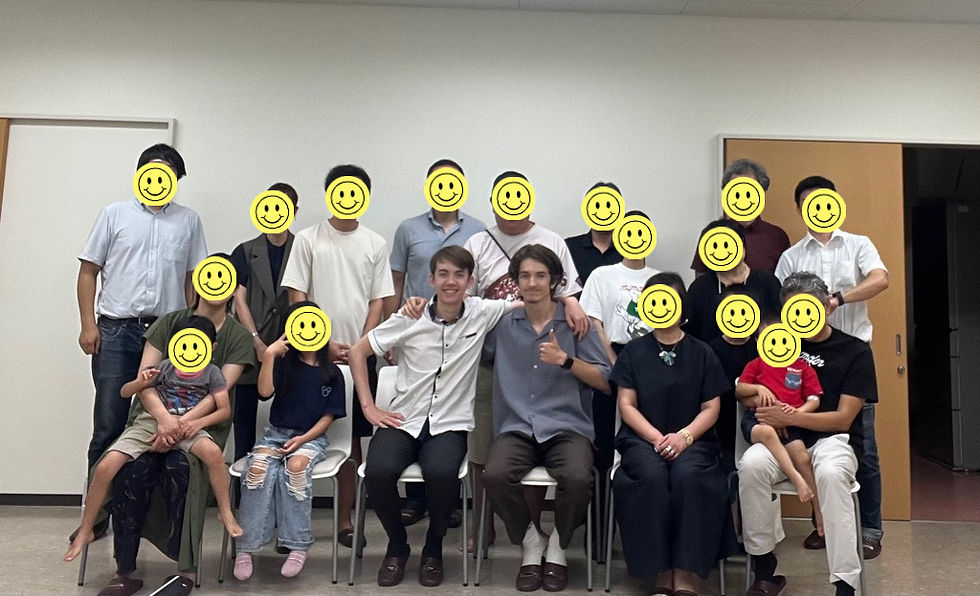Ibara's Main Industry : The Denim
- Ibara Interns

- Jul 24, 2025
- 3 min read
Updated: Aug 7, 2025
You probably know by now that Ibara was the origin of Japanese denim and responsible for about 70% of production in the 70s. But how do you actually make Denim ? Come look at all the steps of the process, each of them taking place in Ibara.
1 : From cotton to colorful thread
Right next to the center of the city lies the kuroki factory, which dyes the fabric.
On the second floor, spools of white cotton thread are woven into thick bands, containing up to 648 threads at a time.
Then, the bands are washed in hot water, and dyed multiple times. For that particular batch, the bands were firstly dyed yellow once, then soaked multiple times in indigo dye.
On these pictures you can see the bands go up and down quite far. That's because the dye needs to be oxidised, and there is no oxygen inside the colorant.
This also means that the whole process needs to be exposed to the outside air, and so you can smell the heated dyes. It smelled so bad I almost wanted to cover my nose.
The bands are washed and dried, then stored for the next step.
An important part of making denim is that the threads
are only colored outside. This gives the fabric its recognisable used look, as the inner white gets exposed.
Lastly, the dyed bands are separated back into threads, which are finally glued in pairs for strength, and stored as spools of dyed string.
1b : But where does the color come from ?
In Ibara, there is also a dye making company ! This family has been in this business for around 100 years, and they now also trade with companies overseas, like in India and in China. They buy colors from these companies, and use them in their factory to create their own special blends, ranging from Indigo (of course), to yellow and green.
2 : From spools to fabric
After the dyed spools are made, the Nihon Menpu company takes over.
In their warehouse are dozens and dozens of weaving machine, which make so much noise its surprising the whole neighboorghood doesn't hear it.
A lot of the noise comes from this little brick :
It is hit repeatedly and very fast (2-3 times per second) by hammers to quickly move it from one side to another, and weave the inner string that it's attached to.
At this step there are two possibilities : the inner thread either goes under 1 above 1, or under 3 above 1. The former make a thin fabric with cross patterns, while the latter, much more popular, creates the diagonal pattern you know.
Finally, the woven fabric is heated to strech and compress to its final size, avoiding the dreaded washing shrinkage at home, and cleaned of any imperfection or lose thread.
This part of the factory is enormous. It really makes you understand how Ibara was able to create more than two third of Japan's Denim.
The finished fabric is sold to more than 100 brands, with some being very luxurious like LVMH. You can also find products made from Ibara denim in the local shops of Ibara, such as the one Nihon Menpu operates, or the Ibara denim shop in Ibara station !
We are very happy that we got to see the whole process from start to finish, it was very interesting. We even both bought products at Nihon Menpu, as they look so good !




Comments